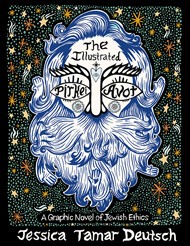This is the third and final short post that links Pirkei Avot to the festival of Purim (tomorrow for most of the world, Friday for Jerusalem and any city that was walled at the time of Joshua).
According to Avot 3:14:
Rabbi Dosa ben Horkinas used to say: "Morning sleep, noontime wine, children's talk and sitting in the meeting places of the ignorant drive a person from the world".
This mishnah makes no overt reference to the festivities of Purim. However, the se'udat Purim -- the generally alcohol-fuelled feast with which Purim concludes -- takes place during the day of Purim itself rather than in the evening that follows it, and before recitation of the ma'ariv (evening) prayers. This year, as inhabitants of Jerusalem are well aware, its celebrations will be taking place on Friday. To allow a little breathing space before Shabbat commences, Jerusalemites will be knocking back the alcoholic beverage of their choice in the middle of the day.
Does this mishnah cast a cloud of solemn sobriety over the fun-day which in Jerusalem immediately precedes it? The answer is probably "it all depends".
Jewish tradition adopts a variety of positions regarding wine. For example, in Psalms we learn that "wine gladdens the heart of man" (Tehillim 104:15). However,
“When a person drinks one cup of wine, he acts like a little lamb – humble and meek. When he drinks two, he becomes as mighty as a lion and starts to boast ‘Who is like me?’ When he drinks three cups, he becomes like a monkey, jiggling around, dancing, giggling and uttering obscenities in public, without realizing what he is doing. Finally, he becomes blind drunk and is like a pig; wallowing in muck and settling down in the mire” (Midrash Tanchuma, parashat Noach 13).
The Romans recognised the force of wine in loosening one's inhibitions, coining the Latin tag "in vino veritas" ("in wine there is truth"), which is reflected in the Hebrew tag “nichnas yayin yetze sod” (“In goes wine, out comes a secret": Eruvin 65a). But is truth a potential casualty of Purim? Many people follow the practice of drinking ad delo yoda -- up to the point at which they no longer know the difference between blessing Mordechai and cursing Haman. Needless to say, there are many opinions as to what this means, and as to whether "up to" means "up to but not including", "up to and including" or "up to and then well beyond".
Rabbi Dosa ben Horkinas would doubtless endorse the position that everything turns on a person's capacity to hold his drink and on how it affects his mood and intellectual cogency. Additionally, no-one's Purim alcohol intake should incapacitate them from performing further mitzvot. Rabbi Dosa's teaching suggests a downward sequence that commences with a person sleeping late and ends with him ending up in the company of people who will not elevate him in his religious commitment.
Happy Purim, everyone! Enjoy your drink, but do make an effort to drink sensibly.
















